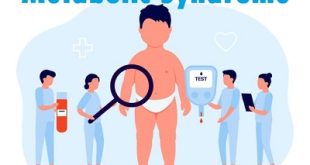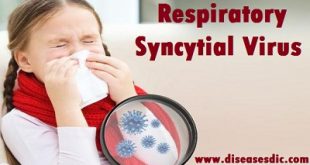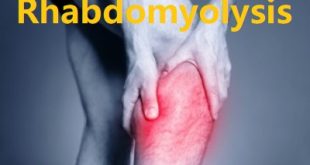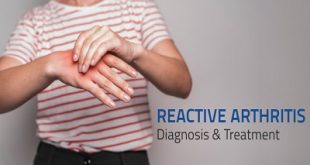Definition
Reye’s syndrome is a rare but serious disease that is characterized by cerebral and hepatic impairment that occurs after influenza, a respiratory infection, or chickenpox. Reye’s syndrome mainly affects children and adolescents. It sometimes affects infants, and very rarely affects adults. It appears most often in the wintertime when these viruses and infections are most active. Approximately one-third of cases of Reye’s syndrome occur after a case of chickenpox.
Reye’s syndrome is a rare disorder. It was first discovered in the early 1970s. The number of cases of Reye’s syndrome rose slowly until 1980. In that year, 555 cases of the disorder were diagnosed. Researchers had learned at that point that children who are given aspirin are at risk for Reye’s syndrome. Doctors began to warn parents against the use of aspirin with sick children. As a result of those warnings, the number of cases of Reye’s syndrome began to fall. By the late 1990s the condition was very rare in the United States.
Reye’s syndrome is sometimes confused with other nervous-system disorders. The reason for this confusion is that many doctors have never seen a case of Reye’s syndrome. They may diagnose a patient with encephalitis, diabetes, poisoning, or some other condition by mistake. The actual number of cases of Reye’s syndrome may therefore be somewhat higher than the official total.
Epidemiology
Reye’s syndrome is a rare disease. There has been a significant decrease in the classic Reye’s syndrome cases as a result of the restriction of salicylates in children. Seasonal variation was between December and April when flu-like illnesses were most prevalent but, in recent years, the sporadic cases to not exhibit such a pronounced seasonal effect.
An association has been shown to exist between Reye’s syndrome and the use of aspirin during the prodromal illness. The falling incidence is lauded as a public health success, informing the public about the dangers of giving aspirin to children under 12. However, Reye’s syndrome can occur in older children and even in adults. Teenagers should also be advised to use ibuprofen and paracetamol rather than aspirin. The usual presentation is between 5 and 14 years with a median of 7. It is rare over 18 but can occur in the first year of life.
Reye’s syndrome risk factors
Reye syndrome is most common in children aged 2 to 16 years. But, it can happen at any age. Your chances of Reye syndrome are higher for:
Using aspirin or aspirin-based products, mainly in children who have a viral infection
Having a recent viral illness such as:
- A cold
- The flu
- Chickenpox
Exposure to certain toxins
Causes of Reye’s syndrome
The exact cause of Reye’s syndrome is unknown, although several factors may play a role in its development. Reye’s syndrome seems to be triggered by using aspirin to treat a viral illness or infection particularly flu (influenza) and chickenpox in children and teenagers who have an underlying fatty acid oxidation disorder.
Fatty acid oxidation disorders are a group of inherited metabolic disorders in which the body is unable to break down fatty acids because an enzyme is missing or not working properly. A screening test is needed to determine if your child has a fatty acid oxidation disorder.
In some cases, Reye’s syndrome may be an underlying metabolic condition that’s unmasked by a viral illness. Exposure to certain toxins such as insecticides, herbicides and paint thinner also may contribute to Reye’s syndrome.
Symptoms of Reye’s syndrome
Reye syndrome often starts when a child is recovering from a viral illness, such as the flu or chickenpox. Symptoms usually appear 3 to 7 days after the viral illness starts. They may develop over several hours to a day or two.
The first symptoms may include:
- Sudden retching or vomiting.
- Lack of energy and loss of interest in things.
- Strange behaviour, such as staring, irritability, personality changes, and slurred speech.
- Sleepiness
As liver damage and brain damage get worse, other symptoms may develop, including:
- Confusion, your child may not know where he or she is, recognize family or friends, or be able to answer simple questions
- Fast, deep breathing (hyperventilation)
- Violent behaviour, such as hitting others without reason
- Seizures and coma
If Reye syndrome is not treated quickly, it can cause death.
If your child has symptoms of Reye syndrome, get medical care right away, even if your child has not had a recent viral illness or taken aspirin. Early treatment makes full recovery more likely.
Complications
Complications include
- Electrolyte and fluid disturbances
- Increased intracranial pressure
- Diabetes insipidus
- Syndrome of inappropriate ADH secretion
- Hypotension
- Arrhythmias
- Bleeding diatheses (especially gastrointestinal)
- Pancreatitis
- Respiratory insufficiency
- Hyperammonemia
- Aspiration pneumonia
- Poor temperature regulation
- Uncal herniation and death
Diagnosis and test
There’s no specific test for Reye’s syndrome. Instead, screening for Reye’s syndrome usually begins with blood and urine tests as well as testing for fatty acid oxidation disorders and other metabolic disorders. Sometimes more-invasive diagnostic tests are needed to evaluate other possible causes of liver problems and investigate any neurological abnormalities. For example:
Spinal tap (lumbar puncture): A spinal tap can help the doctor identify or rule out other diseases with similar signs and symptoms, such as infection of the lining that surrounds the brain and spinal cord (meningitis) or inflammation or infection of the brain (encephalitis). During a spinal tap, a needle is inserted through the lower back into a space below the end of the spinal cord. A small sample of cerebrospinal fluid is removed and sent to a lab for analysis.
Spinal tap (lumbar puncture)
Liver biopsy: A liver biopsy can help the doctor identify or rule out other conditions that may be affecting the liver. During a liver biopsy, a needle is inserted through the skin on the upper right side of the abdomen and into the liver. A small sample of liver tissue is removed and sent to a lab for analysis.
Liver biopsy
Computerized tomography (CT) scan or magnetic resonance imaging (MRI): A head CT or MRI scan can help the doctor identify or rule out other causes of behaviour changes or decreased alertness. A CT scan uses a sophisticated imaging machine linked to a computer to produce detailed, 2D images of the brain. An MRI scan uses a strong magnetic field and radio waves rather than X-rays to generate images of the brain.
Skin biopsy: Testing for fatty acid oxidation disorders or metabolic disorders may require a skin biopsy. During a skin biopsy, a doctor takes a small skin sample (biopsy) for analysis in a lab. A biopsy can usually be done in a doctor’s office using a local anesthetic.
Treatment and medications
Patients suffering from Reye syndrome are always treated as an in-patient case in the hospital although severe cases may require intensive care. The following specific treatments are implored in the treatment of Reye syndrome among admitted patients:
Intravenous solutions: Intravenous fluids may replace imbalances in glucose and other electrolytes among patients with Reye syndrome.
Osmotic diuretics: Diuretics like mannitol may be used to decrease the intracranial pressure in patients with brain edema. Hypertonic saline at 3% may also decrease the level of brain edema.
Medications that prevent bleeding: Hepatic damage in Reye syndrome may require exogenous sources of Vitamin K, plasma and platelet concentrates to prevent bleeding problems that may occur.
Liver transplant: Liver transplantation may be the last option in cases of severe irreversible liver damage among infants presenting with encephalopathy and fulminant hepatitis
Prevention of Reye’s syndrome
Because of the possible link between aspirin and Reye’s syndrome, aspirin should only be given to children under 16 on the advice of a doctor when it’s felt the potential benefits outweigh the risks.
Children under 16 should also not take any products containing:
- Acetylsalicylic acid
- Acetylsalicylate
- Salicylic acid
- Salicylate
- Salicylate salts
Some mouth ulcer gels and dental gels contain salicylate salts. These should not be given to children under 16 years of age. There are alternative products that are suitable for under 16s – ask your pharmacist for advice.
 Diseases Treatments Dictionary This is complete solution to read all diseases treatments Which covers Prevention, Causes, Symptoms, Medical Terms, Drugs, Prescription, Natural Remedies with cures and Treatments. Most of the common diseases were listed in names, split with categories.
Diseases Treatments Dictionary This is complete solution to read all diseases treatments Which covers Prevention, Causes, Symptoms, Medical Terms, Drugs, Prescription, Natural Remedies with cures and Treatments. Most of the common diseases were listed in names, split with categories.







